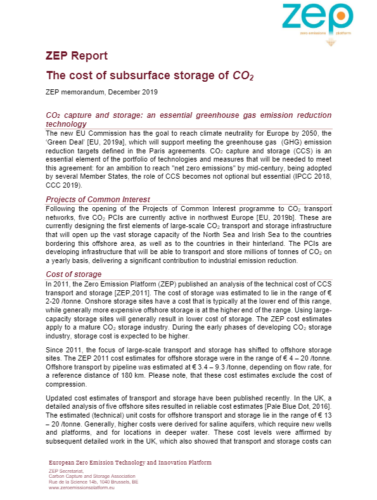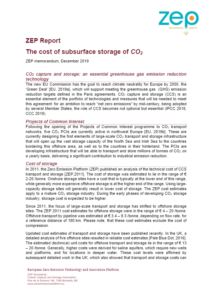The cost of subsurface storage of CO2
The new EU Commission has the goal to reach climate neutrality for Europe by 2050, the ‘Green Deal’ [EU, 2019a], which will support meeting the greenhouse gas (GHG) emission reduction targets defined in the Paris agreements. CO2 capture and storage (CCS) is an essential element of the portfolio of technologies and measures that will be needed to meet this agreement: for an ambition to reach “net zero emissions” by mid-century, being adopted by several Member States, the role of CCS becomes not optional but essential (IPCC 2018, CCC 2019).
As large-scale CCS transport and storage infrastructure is being designed, with first injection planned in the mid-2020s, CCS remains one of the more cost-effective GHG emission reduction technologies, offering the possibility of deep and short-term emission cuts, not only for energy-intensive industries, but also for other sources of CO2 emissions.
In a mature CCS industry, the technical cost of storing CO2 in offshore storage reservoirs is expected to lie in the range € 2 – 20 /tonne; adding transport and compression cost will bring this in the range of € 12 – 30 /tonne.

